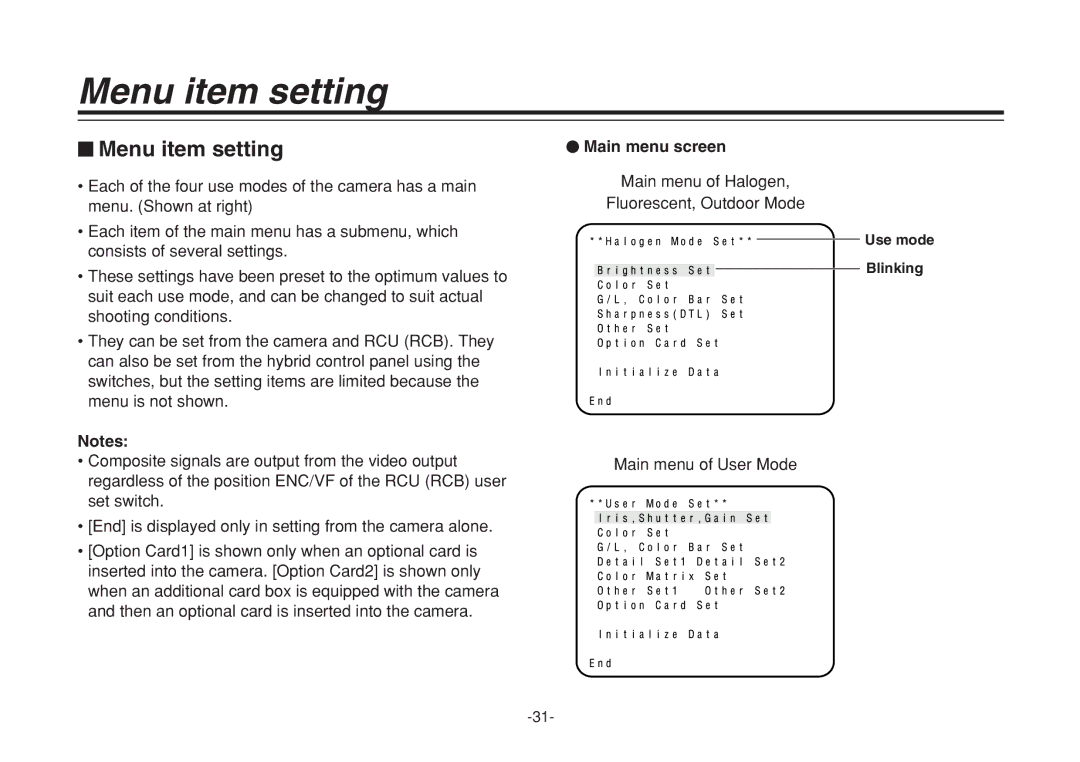AW-E860N specifications
The Panasonic AW-E860N is a state-of-the-art HD integrated camera designed for a multitude of broadcasting and production environments. This versatile camera is particularly notable for its excellent image quality, user-friendly features, and robust connectivity options, making it a strong choice for professionals in the fields of live events, corporate communication, and education.One of the standout features of the AW-E860N is its high-resolution 1/2.3-inch MOS sensor, which delivers stunning Full HD 1080p images at 60 frames per second. This high frame rate ensures smooth motion capture, essential for sports and fast-paced action environments. Additionally, the camera supports a wide dynamic range, allowing for impressive performance in varying lighting conditions. The advanced image processing technology employed by Panasonic helps reduce noise and enhance clarity, ensuring that even the smallest details are depicted accurately.
Connectivity is another strong point of the AW-E860N. The camera is equipped with simultaneous HDMI and SDI outputs, enabling flexible integration into existing production setups. The SDI output supports long cable runs, making it suitable for large venues and remote broadcasting. Furthermore, the AW-E860N features IP streaming capabilities, allowing for easy integration into modern IP-based workflows. This connectivity is complemented by built-in NDI (Network Device Interface) technology, enabling seamless communication with other devices in an IP network.
The AW-E860N is designed with user convenience in mind. It comes with an intuitive web interface, allowing for remote control and settings adjustment from any device with web access. This feature is particularly beneficial for users working in dynamic environments where quick adjustments may be necessary. Moreover, the camera provides comprehensive control options, including PTZ (pan, tilt, zoom) functionality, which can be operated via various compatible controllers.
Additional features include a variety of frame rates and resolutions for diverse applications, an optional lens for increased versatility, and support for power over Ethernet (PoE), simplifying installation and reducing cable clutter. The robust build quality ensures durability, making the AW-E860N a reliable choice for both indoor and outdoor setups.
In conclusion, the Panasonic AW-E860N stands out in the crowded market of integrated HD cameras due to its combination of high-quality imaging, extensive connectivity options, and user-friendly features. Whether for live broadcasting, educational use, or corporate events, this camera delivers professional-grade performance suitable for a wide array of applications.

